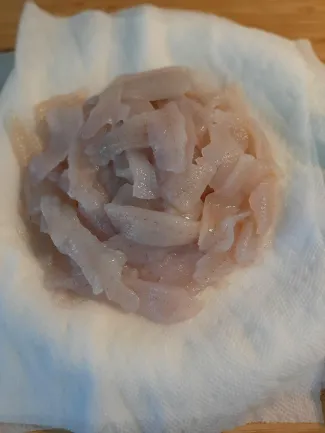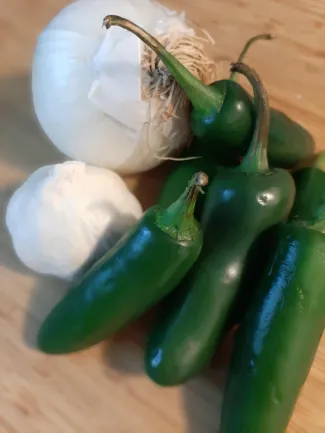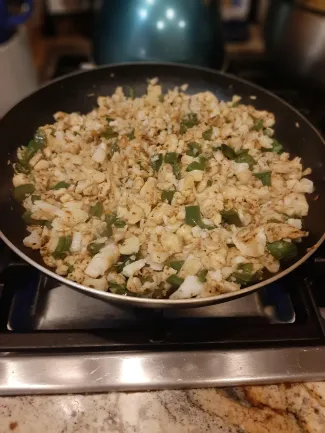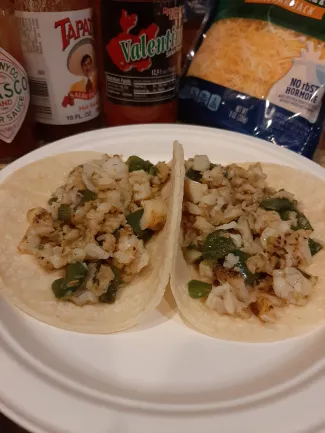CRAPPIE TACOS
Crappie are good no matter how you cook 'em, but there's one way that really makes me want to clean 'em. Pan-seared crappie tacos!
After several springs of trial and taste, I believe I've finally gotten to the point where I'm done tinkering with the recipe.
Let's start with the one ingredient you can't buy at the store, crappie! What an awesome fish, easy to catch and butter on the taste buds. Head to your local crappie fishing honey hole and fill up a bucket with a limit of crappie, 37 fish in most places with no size restrictions, but always check the current fishing regulations before hitting the water because some lakes have special limit and size restrictions on crappie.

When I fillet and skin them, I cut right down the blood line in the center of the fillet, keeping only the top strip and throw the ribcages with the belly meat into a separate ziplock to freeze and use later for catfish bait. But, if you want to just cut out the ribcage, leaving a check-mark shaped fillet with the belly meat, that's fine too.
Put the fillets in a gallon ziplock bag, fill the bottom third of the bag with cold water and dump three tablespoons of basic salt in with the lot. If possible, let the fillets soak for 24-48 hours in the fridge. Before cooking, rinse the fillets under cold running water. Pat fillets dry with a paper towel. Set aside the fillets on a plate with paper towels to soak up any remaining moisture.
Pit and dice six jalapeno peppers. Peel and dice one white onion. Peel and dice one clove of garlic.
Pre-heat pan or cast iron skillet, over medium-high heat, with two tablespoons of either butter or olive oil. Add diced jalapeno peppers, onion and garlic to the pan. Sear for 3-5 minutes, stirring occasionally.
Turn heat down to medium and add crappie fillets. For best results, use a spatula to pile the veggies on one side of the pan and place the crappie directly to the pan on the other side.
Season the tops of the fillets and veggies with salt, pepper and Old Bay, cover with a lid or foil and let cook for 3-5 minutes. Flip filets, lightly season with salt, pepper and Old Bay, cover and let cook for 3-5 minutes.
Stir all of the ingredients together until they are evenly mixed, turn burner down to lowest setting, cover and let stand for 1-2 minutes.
Plate street taco style corn tortillas and pile on the crappie and veggies. Add grated cheese and hot sauce if you like and enjoy!
Ingredients
- (1) limit of crappie
- (6) jalapeno peppers
- (1) clove of garlic
- (1) white onion
- Salt
- Pepper
- Old Bay original seasoning
- (2) tablespoons of butter or olive oil
- Street taco style corn tortillas
- Grated cheese (optional)
- Hot sauce (optional)
CRAPPIE FISHING TIPS
Before the spawn, when water temperatures are between 45˚F and 55˚F, crappie will begin moving from their wintering habitat to transition areas (areas of rapid depth change) near their desired spawning area. During the pre-spawn period, live minnows or soft plastic baits like baby shad fished below a slip cork bobber in 6-20 feet of water in the transition areas are an effective way to catch a lot of fish.
Crappie require hard bottom to spawn, so you want to target shallow areas with rocky outcroppings, gravel or hardwood logs once water temperatures reach 52˚F for black crappie and 56˚F for white crappie. Naturally colored tubes, chartreuse, white or lime green swimbaits and inline spinners or a live minnow fished below a fixed bobber are all good options for targeting crappie in less than 10 feet of water when the spawn begins.
Female crappie get in and out after dropping eggs on the nest and retreat back to transition areas to rest and feed.
Male crappie provide the parental care to the eggs and fry. They don’t actively “feed” during this time, but they defend which creates an additional week or so of heavy bite action.
This is the time to fish small brightly colored baits (pinks, oranges, chartreuse, and neon) in the areas immediately surrounding the spawning habitat.
Male crappie are not intentionally trying to consume baits while protecting the eggs or fry, but rather injure or warn the intruder, so you have to be quick on the hook set. Try to get your hook point as close to the back of your bait as possible without compromising its swimming action. You can cut a quarter-inch off the front of a soft plastic bait before affixing it to your hook to achieve this or use a small inline spinner like a Rooster Tail that has the hook already affixed to the back of the bait. It’s important to keep slack out of your line so you’re in constant contact with the bait.
Once the spawning process has concluded and the males have left the fry, go back to targeting the transition areas that have the most cover and bottom structure and use presentations from the pre-spawn period.





